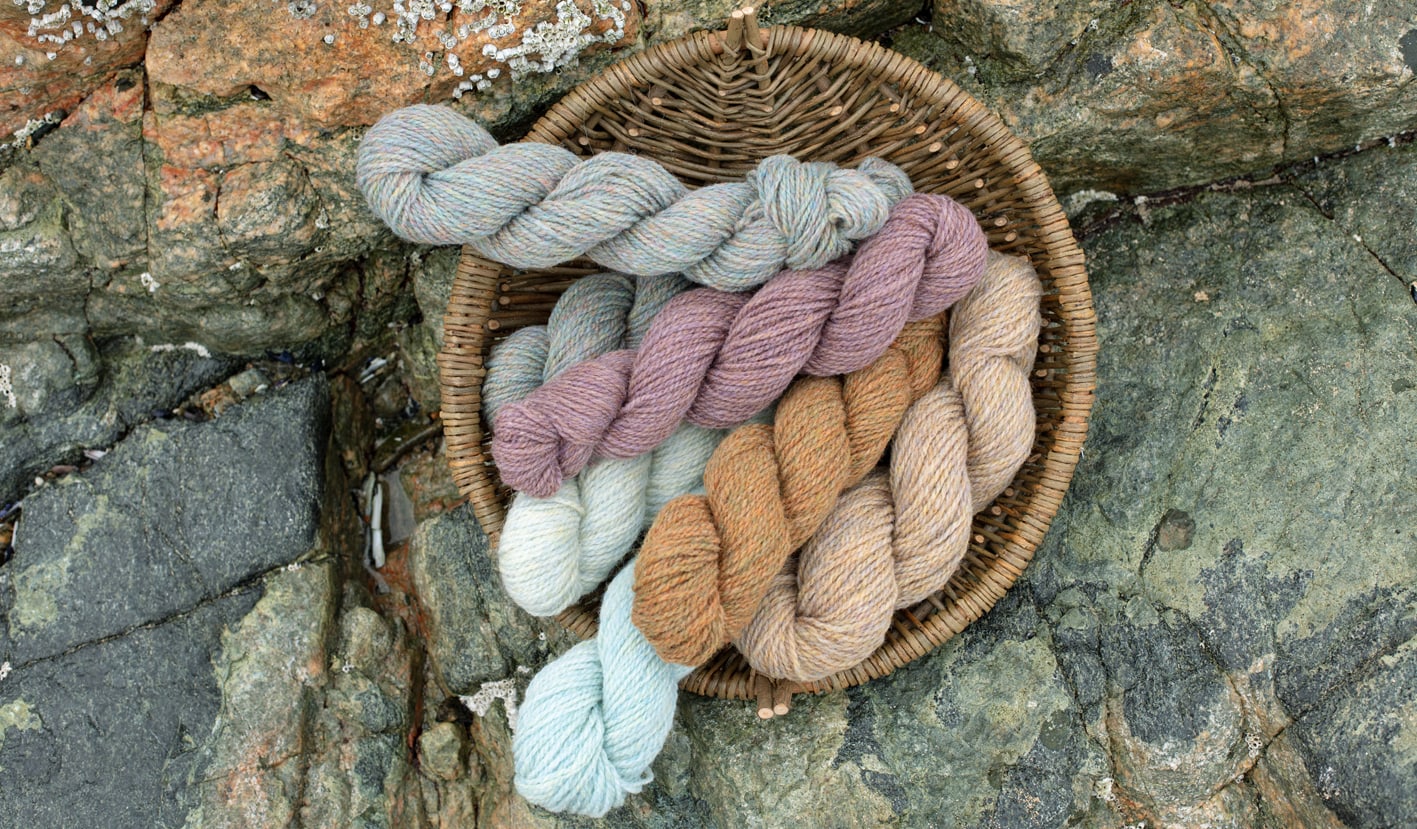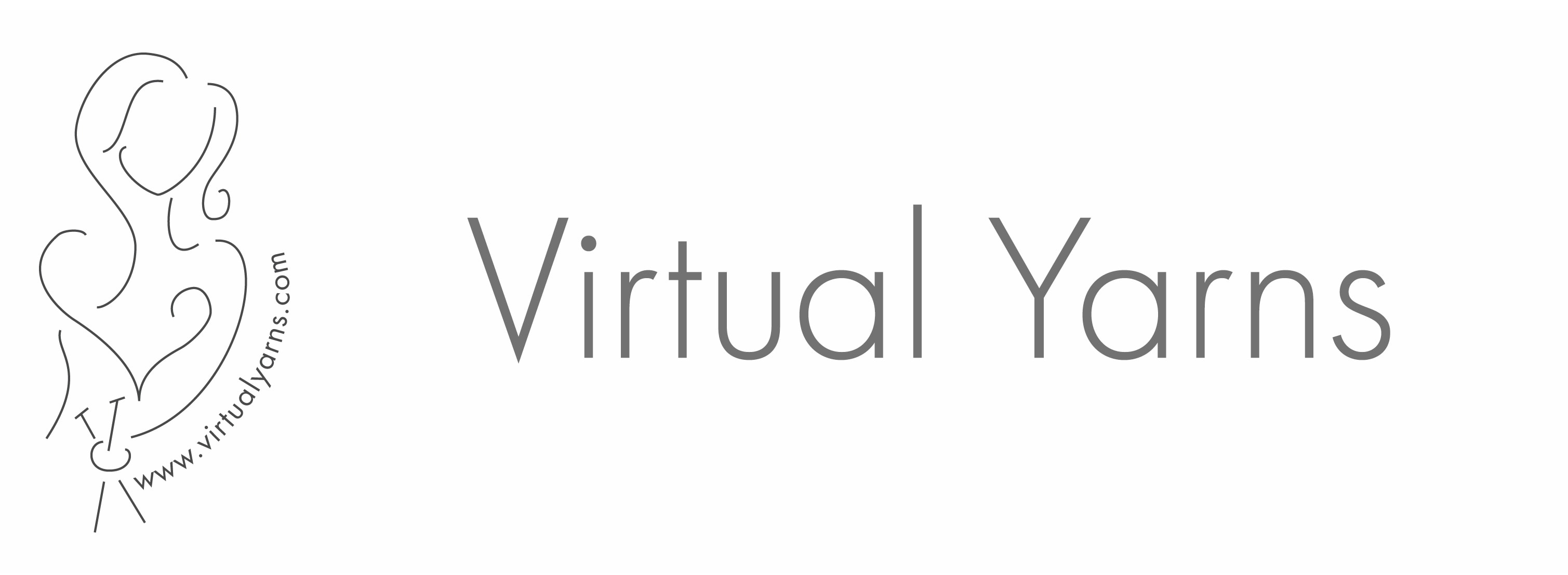
Technical Yarn Information
Alice Starmore yarns are sold both loose and in the form of kits. Alice Starmore Hebridean yarn is an artisan product and is hand-skeined. The skeins may vary slightly in weight. It is priced per 50g of 2 Ply yarn and per 50g of 3 Ply yarn. Each order is weighed to ensure that you will receive – at minimum – the full weight ordered, regardless of number of skeins. Our pattern-inclusive kits are made up in skeins of varying weight, according to the amounts required for each project. Every project on our website has been knitted here at Virtual Yarns, so we know precisely how much yarn is required to make them. Each kit contains that amount plus an extra 8 per-cent more yarn. This is enough yarn to knit a swatch and the project, PROVIDED THE INSTRUCTIONS ARE FOLLOWED FOR THE SIZE ORDERED. The extra 8 per-cent allows reasonable leeway for knitter error. Kits are made up by hand to order, and each yarn amount is carefully weighed. If a skein weighs more than required then the customer receives a few free grams.
Weight to length ratio (yardage): approx 170m per 50g at standard conditions.
Wraps per Inch: 13.
Standard Knitting Tension
Stocking Stitch: 22-28 sts x 31-42 rows to 10cm on 2.75mm – 4.5mm needles.
Stranded Two-Colour Knitting: 26-29 sts x 31-34 rows to 10cm on 2.75mm – 3.5mm needles.
The tensions given above are for standard types of knitting. Please note however that we have created our Hebridean yarns to be versatile. For example, the loft and bounce of our Hebridean 2 Ply means that it can be very successfully knitted in openwork on larger needles as you will see in my Driftnet, Birdsfoot and Seaweed scarves, which are all knitted on 4.5mm needles. We plan to use our Hebridean yarns in a wide variety of ways.
Weight to length ratio (yardage): approx 100m per 50g at standard conditions.
Wraps per Inch: 11.
Standard Knitting Tension
Stocking Stitch: 21-23 sts x 28-32 rows to 10cm on 3.75mm – 4.5mm needles.
Stranded Two-Colour Knitting: 21-22 sts x 24-26 rows to 10cm on 4.5mm – 5mm needles.
The yardage information will give you a rough idea of the thickness of the yarn, and it is most frequently asked about in relation to yarn substitutions. However, please note that it is not that simple. Yarn yardage is not the magic number that some consider it to be, which is why although it is no secret we do not put it on our yarn labels. There are many other considerations. Let me explain.
Creating a new yarn from scratch has been the single most exciting and challenging objective I have had as a designer. It involves hard work and much experimentation to achieve your desired aims. As well as the obvious desire for a high quality pure wool in rich and subtle colourings (see our Hebridean Colour Stories), another high priority was to create a yarn which would provide us as designers with a broad spectrum of possible effects. We wanted a yarn which would work spectacularly well with both knitting and needlepoint. We wanted it to be a yarn which would work successfully over a wide range of colour work, textures, needlepoint canvas gauges, and knitting tensions from firm to loose and open. To do this we carefully considered the composition. The factors involved are
- The quality and ‘crimp’ (spring/elasticity) of the raw material.
- The loft (smooth v fluffy)
- The spin of the yarn.
- The ply (amount of twist when the individual strands are put together).
All of these factors are crucial to the performance of the product. All of these things need to be considered in substituting one yarn for another. Whilst our yarn has been designed with versatility in mind, I would advise that if you are planning to substitute it for another yarn, then please experiment with swatches first. You simple cannot expect the same results from different yarns. Our designs are all specifically created for our own yarns.
Footnote. Please also note that all wool yarn contains moisture and the yardage can be affected by humidity and temperature. If you store yarn in a dry and hot atmosphere it will lose moisture which, as well as being very bad for the yarn, will make it lighter thus affecting the length per weight. Conversely if is is kept in damp conditions it will absorb moisture and become heavier.
Coverage on needlepoint canvas
1 x 2ply strand 14HPI
1 x 3ply strand 12HPI
2 x 2ply strands 10HPI
2 x 3ply strands or 3 x 2ply strands 7.5HPI
Options for 5 HPI canvas
4 x 2ply strands for light coverage Continental/Basketweave Stitches. Medium coverage Cross Stitch.
3 x 3ply strands for medium coverage Continental/Basketweave Stitches. Dense coverage Cross Stitch.
5 x 2ply strands for dense coverage Continental/Basketweave Stitches.
